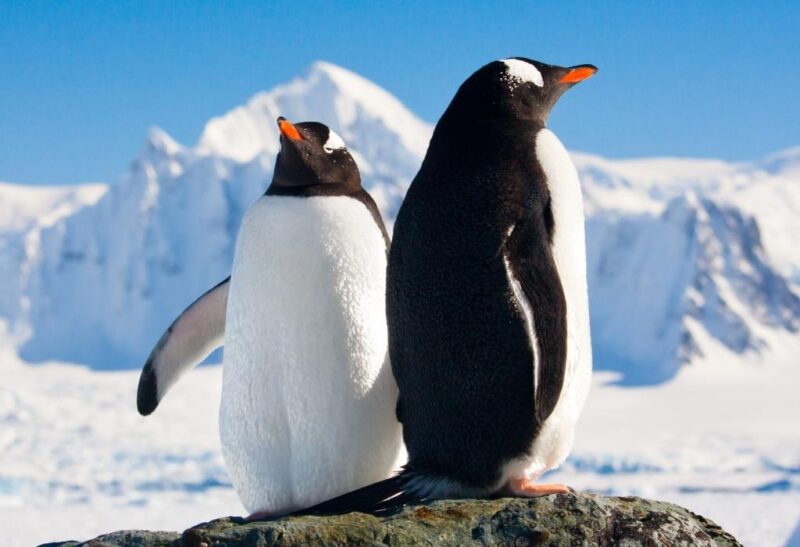The sight of penguins waddling in an icy place makes you giggle. But it’s not all good life for them as they need to search for food and feed their cute, fluffy young.
Fish is included in their diet, and you may wonder if they chew it inside their beaks before swallowing.
Do penguins have teeth? Since penguins are birds, they don’t have teeth. There are spikes found on their tongues and the roof of their mouths. These sharp parts look like the stalactites that are inside the caves. Due to these spikes that point in their throats’ direction, fish don’t come out of their mouths and rather proceed to the digestive tract.
Teeth are heavy, so they can be baggage for birds when in flight. Penguins are considered flightless birds, but they still share a common body structure with the other species.
The teeth’s weight can get in the way of aerodynamic weight distribution. This aspect is applied to penguins when they swim in the ocean. To learn more, read on.
Table of Contents
How Many Teeth Do Penguins Have?
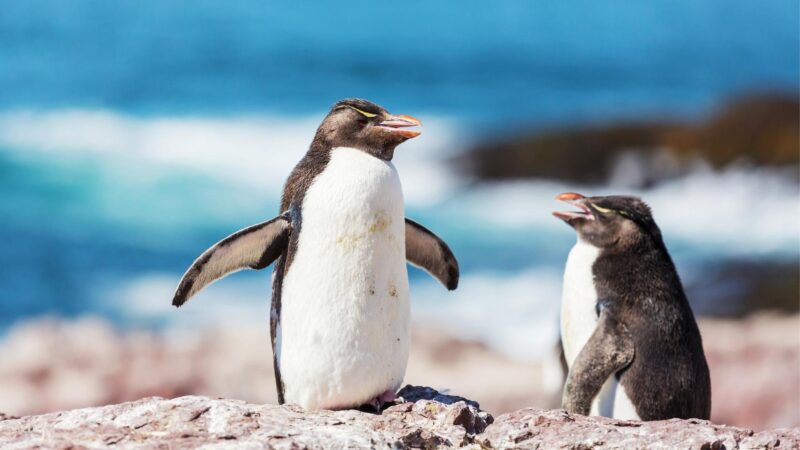
Penguins don’t have teeth. They only have ‘egg-tooth,’ which is present before they’re hatched. Together with their beak, the egg-tooth breaks the egg’s shell. Every bird has these features, as well as crocodiles, turtles, and spiders.
Do Penguins Have Sharp Teeth?
Penguins don’t have teeth so it follows that they don’t have sharp teeth. They only have the spikes on their tongue and mouth’s roof.
These spikes are equivalent to human papillae, but they’re much longer. In addition, penguins have a pointy beak, which is used to grab food.
Can Penguins Bite?

A beak is a common feature among birds, so they use this body part to seize prey. This is true among piscivorous birds or birds that eat fish. Penguins are one of them, and they use their beaks like forceps.
Therefore, penguins can bite even though their beaks have unsteady force. Still, they can have a precise capture mechanism.
The first thing that penguins do with their prey using their beaks is incapacitate it so it won’t run loose. The best part is that penguins can quickly pick and bite their prey through the tip of their beaks.
Based on the study conducted at the University of Cape Town, the beak tip of penguins can bite with a force of 400 grams of weight.
Do Penguins Have Tongues? What Is It Used For?
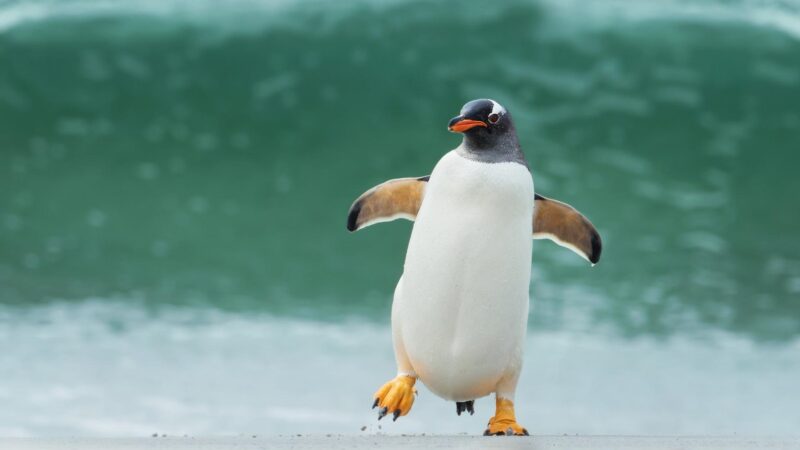
Penguins have tongues. Their tongues have spikes called hornae papillae. They are large bristles made up of keratin to help them grab the fish that enters their mouth. In terms of the palate, penguins have poor taste, just like most birds.
In a study conducted at the University of Michigan, penguins don’t have taste receptors for umami, sweet, and bitter. As expected, most birds can’t distinguish sweetness.
This happens because of the freezing temperature in Antarctica, the place where the evolution of modern penguins took place.
Taste buds may be unavailable among these animals, as discovered in the study. Even though they have taste receptors for sour and salty tastes, they can sometimes work poorly under low temperatures.
Do Penguins Chew Their Food?
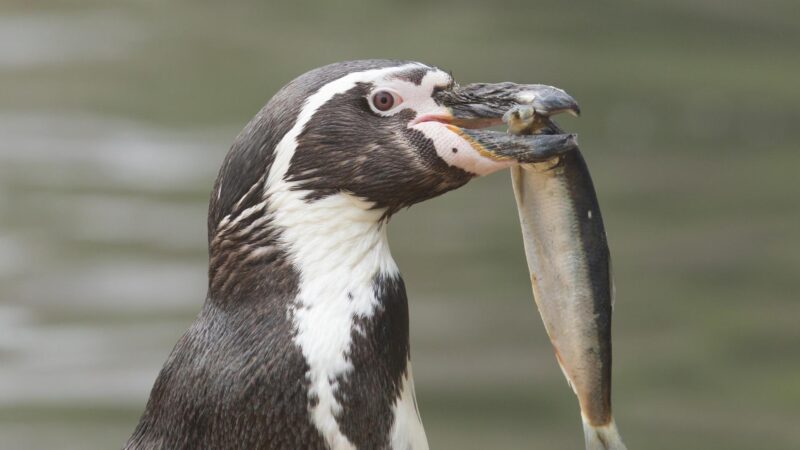
Penguins don’t chew their food as the spikes or hornae papillae direct the food to the esophagus until it reaches the digestive system.
This can be clarified by how the digestive system of a penguin works. Since no chewing occurs, small tiny pebbles aid digestion.
Penguins usually eat a meal that is a quarter of their weight. They have a relatively long esophagus as their stomach is located in the lowermost part of their bodies. Unlike other birds, they don’t have a crop or muscular pouch over their chest or sternum.
Despite the long travel of food through the esophagus, digestion in the penguins’ stomachs can happen quickly. With their ability to adjust their pH level, they may slow it down. They can convert the food into energy or fat in just 6 hours or less.
Do Penguins Eat Rocks?
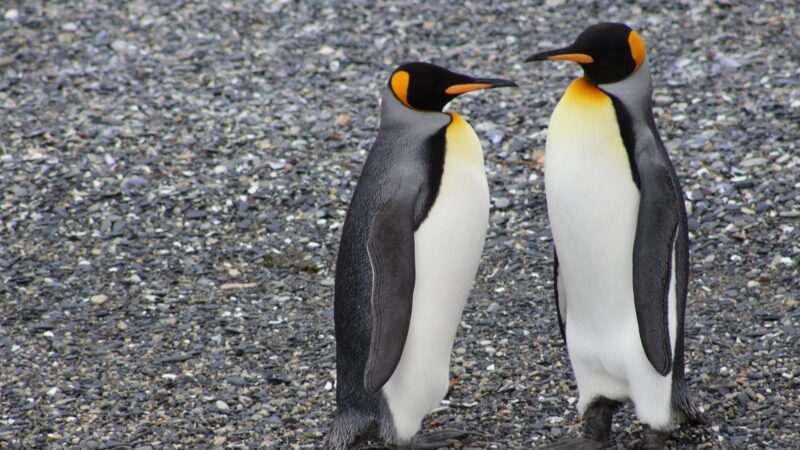
Penguins eat rocks which help digestion. As mentioned, they don’t chew their food as it goes directly to the esophagus. Stone in the digestive system of penguins has other functions. They can help maintain the shape of the stomach and prevent atrophy.
Stones or gastroliths can also get rid of stomach parasites. Furthermore, they are responsible for mixing foodstuff and secreting stomach juices.
They can also carry on stomach functionality when penguins are fasting, which is usually during courtship, incubation, and molting on land.
A study was conducted to find out about the stomach stones or gastrolith found among king penguin chicks. The young could have ingested the stones through swallowing or regurgitation.
Researchers wonder about it since the chicks are known to be fed with partly digested food. Animals like birds, vertebrates, and even dinosaurs use gastroliths to grind or break down food.
Gastrolith is usually useful when they become adults. At the end of the study, it’s still unclear whether the chicks swallowed the stones by themselves or if they were from their parents.
King penguin chicks ingest them in the first year of their lives or even earlier. Hence, the matter of time when ingestion of gastroliths happens is questioned.
Researchers have considered that early ingestion of stones can be related to buoyancy. However, it doesn’t make a difference in their body weight. As an example, a king penguin chick that weighs 6.5 kg has only 43.5 grams of stones in its stomach.
This amount of stones can’t affect the buoyancy of chicks even if they swim in the early life phase.
What Do Penguins Eat?
Penguins eat various animals, such as fish, squid, and krill. Smaller species would feast on squid and krill, and those that live up north mainly consume krill. The large species, namely King and Emperor penguins, eat fish and squid.
These foods refer to the diet of adult penguins. In the case of baby penguins, they are fed ‘fish milk,’ oil from the nutrients of the adult foods.
It needs several days for this substance to come together. They are also fed by their parent regurgitated combination of fish, squid, and krill.
When the baby’s food is ready, the parent opens its mouth wide open. Then, the chick’s beak gets into the mouth of its parent, which functions as a large spoon. These are the normal processes that can go on as long as there’s a supply of food.
When Antarctica begins to warm up, it means less fish or food for penguins. According to the researchers of WHOI or Woods Hole Oceanographic Institution, the microscopic plankton that sustains the fish eaten by penguins vanishes when the ice melts.
Due to global warming, the melting of ice is faster than normal. Because of this, there’s a threat that penguins will be extinct by the end of the century. This is the most challenging part for Emperor penguins.
Not only that they are the biggest eaters, but they use ice as a resting platform when they travel to reach foraging grounds. In winter, they need to travel 72 miles and go back to their young waiting to be fed.
Frequently Asked Questions
Are Penguins Toothless?
Penguins are birds, so they’re toothless. Instead, they have spikes or hornae papillae on their tongues and mouth’s roof. These help them to grab their food and send it to the digestive tract.
How Many Taste Buds Do Penguins Have?
Penguins have taste buds for salty and sour tastes. Thus, they can enjoy fish, skill, and squid.
What Are the Flavors that the Penguins Can’t Taste?
Unfortunately, penguins can’t taste umami, bitter, and sweet. Generally, birds don’t know about sweetness like the penguins.
Summary
Even though penguins don’t have teeth, they have hornae papillae, so they can bite and collect their food through the tip of their beaks. These papillae are much longer than those of humans.
These spikes push the food to be swallowed and delivered to the digestive tract. Since the food is not chewed before swallowing, some tiny stones can aid digestion.
List of Sources
Wilson, R. P., Duffy, D. C. (1986). Prey seizing in African Penguins Spheniscus demersus. University of Hawaiʻi – Mānoa.
Hall, D. (2008). Penguins. Smithsonian.
What do Penguins Eat? Western Oregon University,
Are Emperor Penguins Eating Enough? (2018). Woods Hole Oceanographic Institution.
